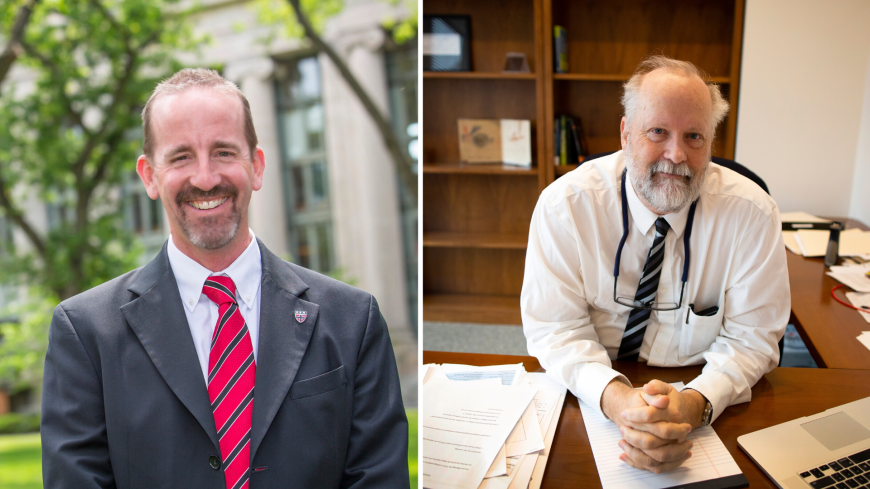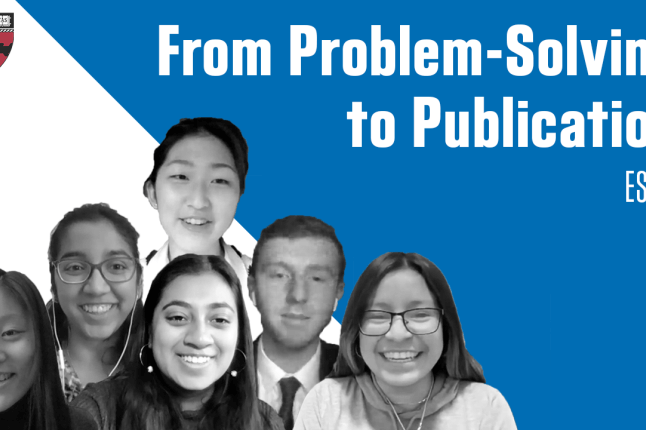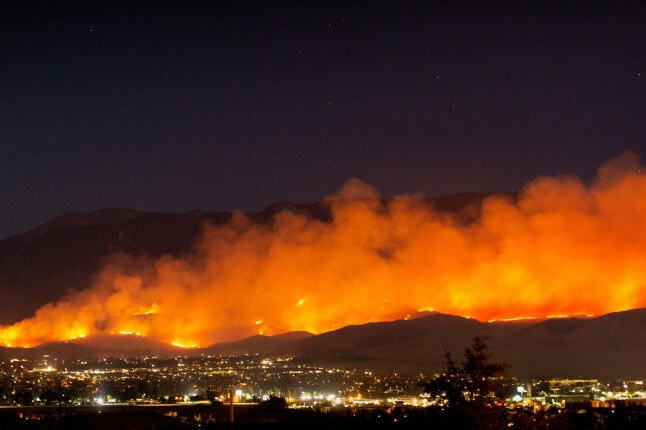News
Frank Doyle, Dean of the Harvard John A. Paulson School of Engineering and Applied Sciences (left) and Christopher Stubbs, Dean of Science in the Faculty of Arts and Sciences (right). Photos courtesy of Eliza Grinnell/Harvard SEAS and Stephanie Mitchell/Harvard
The global scientific community has sent a clear message in response to the coronavirus pandemic: It’s an all-hands-on-deck moment. Researchers across disciplines — from computer science and physics to bioengineering, mathematics, materials science and chemistry — have responded to the call and are working around the clock to support frontline medical personnel and stop the spread of the virus.
At Harvard, traditional disciplinary lines are being blurred as scientists and engineers work together to solve some of the most pressing challenges caused by the virus.
We spoke with Frank Doyle, Dean of the Harvard John A. Paulson School of Engineering and Applied Sciences (SEAS), and Christopher Stubbs, Dean of Science in the Faculty of Arts and Sciences, about how their faculty are working together to respond to the coronavirus pandemic. These two Deans have elevated an already effective peer relationship into a seamless partnership to manage the myriad challenges confronting the Science & Engineering communities at Harvard.
First of all, how are you doing?
Doyle: I’m doing well but I am painfully aware that I am in a privileged position, both health-wise and employment-wise, and there are many far less fortunate than me at this time. Our house is quite active with all three of our college and post-college aged kids back home, and let’s just say that we are giving the WiFi router a good workout.
It’s been incredible to see the global scientific community come together to respond to COVID-19 these past months. How are SEAS and Division of Science researchers contributing to that effort?
Stubbs: We’ve seen the same outpouring of response here. It seems like every day, someone has a new idea to solve a problem caused by the pandemic. So far, most of the research at SEAS and the Division of Science has focused on addressing the shortage of personal protective equipment (PPE) and diagnostic tools. We’ve had researchers develop disposable face shields and diagnostic swabs and evaluate different N95 face mask decontamination methods and help set up COVID-19 testing at Boston-area hospitals.
Doyle: We also have computer scientists collaborating with the T.H. Chan School of Public Health to build models to simulate the effectiveness of physical distancing and shelter-in-place policies. We have environmental scientists and engineers investigating possible meteorological effects on COVID-19 transmission.
It seems like all different disciplines are coming together to solve these problems. How does research like this benefit from these types of cross-disciplinary collaborations?
Stubbs: Very true. The N95 decontamination project, for example, includes microbiologists, quantum physicists, biophysicists, materials scientists, neuroscientists, chemists, engineers, clinicians and more. It just goes to show that no one can solve these challenges alone in the time we need them solved. They are building on each other’s expertise and creativity.
Doyle: As one researcher told me recently, “if necessity is the mother of invention, collaboration must be its father.” SEAS has always been interdisciplinary in nature, but I’ve never seen this level of interdisciplinary collaboration focused around one problem. These projects have gone from idea to prototype to commercial production in just a few weeks. If that doesn’t demonstrate the power of collaboration, I don’t know what does.
Besides research, how else is the Harvard scientific community contributing to the response?
Stubbs: Right before we closed down the labs, we sent a message to our community to please, as you shut off the lights and lock the door, put out your supply of PPE. The community response was incredible. We shipped three truckloads of gloves, N95 masks, protective eye guards, surgical and procedure face masks, and disposable lab coats to the Massachusetts Emergency Management Agency for frontline medical personnel. Harvard faculty have also been engaged in using social media at the national level to redirect PPE to critical care providers.
What has surprised you in the response from the research community?
Doyle: I was delighted to see both how quickly our faculty accepted the need to hibernate the research enterprise on behalf of the greater community health, and I was also thrilled to see how quickly a number of our faculty tapped their innovative creativity and jumped into action to solve the local PPE and related challenges. One of the first e-mails I received from a faculty member was inspiring in its conviction: “my obligation to society, because of its investment and trust in my training as a scientist, is to use whatever resources I have available to meet its needs with scientific and technical solutions.
Pardis Sabeti, Professor of Organismic and Evolutionary Biology, helped set up and scale COVID-19 testing at Massachusetts General Hospital and is helping other Boston-area hospitals do the same. She is currently working with MGH and the Massachusetts Department of Health to sequence viral samples from Massachusetts patients and has helped countries in Western and Central Africa prepare for the pandemic by helping set up diagnostics and laying the groundwork for a pandemic surveillance system in the region.
Jennifer Lewis, Hansjorg Wyss Professor of Biologically Inspired Engineering and Core Faculty Member of the Wyss Institute for Biologically Inspired Engineering; and Senior Research Scientist James Weaver are leading a collaboration with Massachusetts General Hospital and Partners HealthCare to develop disposable face shields for frontline medical personnel that can be quickly mass produced at commercial scales.
John Doyle, Henry B. Silsbee Professor of Physics, has led a Harvard team of researchers, with colleagues from Stanford, MIT, and Berkeley, to evaluate existing N95 decontamination methods -- heat, ultraviolet light, and vaporized hydrogen peroxide treatment. The team includes Adam Cohen, Professor of Chemistry and Chemical Biology and of Physics and Peter R. Girguis, Professor of Organismic and Evolutionary Biology.
Gordon McKay Professor of Computer Science Milind Tambe is collaborating with researchers at the Harvard Chan School of Public Health to develop models to analyze the rate of documentation for Covid-19 cases and the effectiveness of physical distancing and shelter-in-place policies.
Marianna Linz, Assistant Professor of Environmental Science and Engineering and of Earth and Planetary Sciences, is collaborating on a project led by Prof. Mauricio Santillana and Dr. Canelle Poirier at the Harvard Medical School, to investigate possible meteorological effects on COVID-19 transmission.
Kit Parker, the Tarr Family Professor of Bioengineering and Applied Physics and Core Faculty Member of the Wyss Institute, led a consortium of industry, academia and government to respond to the dramatic national shortage of nasopharyngeal swabs.
Peter Huybers, Professor of Earth and Planetary Sciences and of Environmental Science and Engineering, is working on various projects to investigate the impact of climate on COVID-19 transmission and track the spread of the disease using real-time, digital data from smartphones, web searches and other datasets.
Topics: COVID-19
Cutting-edge science delivered direct to your inbox.
Join the Harvard SEAS mailing list.
Press Contact
Leah Burrows | 617-496-1351 | lburrows@seas.harvard.edu



